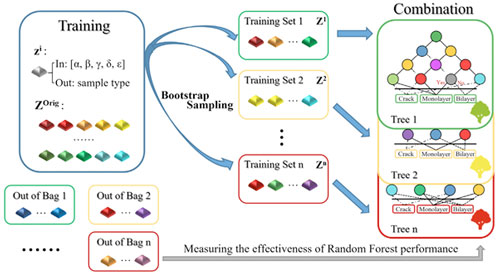| Nov 19, 2020 |
Combining machine learning analysis with 2D material spectroscopy
(Nanowerk News) Machine learning is an important branch in the field of artificial intelligence. Its basic idea is to build a statistical model based on data and use the model to analyze and predict the data. With the rapid development of big data technology, data-driven machine learning algorithms have begun to flourish in various fields of materials research.
|
|
Recently, a research team led by Prof. WANG Jun from the Shanghai Institute of Optics and Fine Mechanics of the Chinese Academy of Sciences (CAS) proposed a recognition method to distinguish the monolayer continuous film and random defect areas of two-dimensional (2D) semiconductors using the machine learning method with Raman signals.
|
|
Their work revealed the application potential of machine learning algorithms in the field of 2D material spectroscopy, and was published in Nanomaterials ("Machine Learning Analysis of Raman Spectra of MoS2").
|
 |
| Basic architecture of the learning procedure in the random forest method. (Image by SIOM) (click on image to enlarge)
|
|
The Raman spectrum of 2D materials is very sensitive to molecular bonding and sample structure, and can be used for research and analysis of chemical identification, morphology and phase, internal pressure/stress, and composition. Although Raman spectroscopy provides enough information, how to mine the depth of information and use multiple information to make comprehensive decisions still needs further research.
|
|
In this study, the researchers used various feature information including the Raman frequency and intensity of MoS2. They used the bootstrap sampling process to obtain sub-training sets containing different spatial location information, and established a random forest model composed of the certain number of decisions through the learning procedure.
|
|
When a new sample point enters the model for prediction and judgment, each decision tree in the random forest will make independent judgments, and then give relatively accurate prediction results through majority voting. In addition to judging the monolayer and bilayer samples, the model can also predict cracks and randomly distributed nuclei that are easily introduced during sample growth.
|
|
The research program proposed in this work introduces machine learning algorithms into the study of two-dimensional material spectroscopy, and can be extended to other materials, providing important solutions for material characterization in different fields.
|

